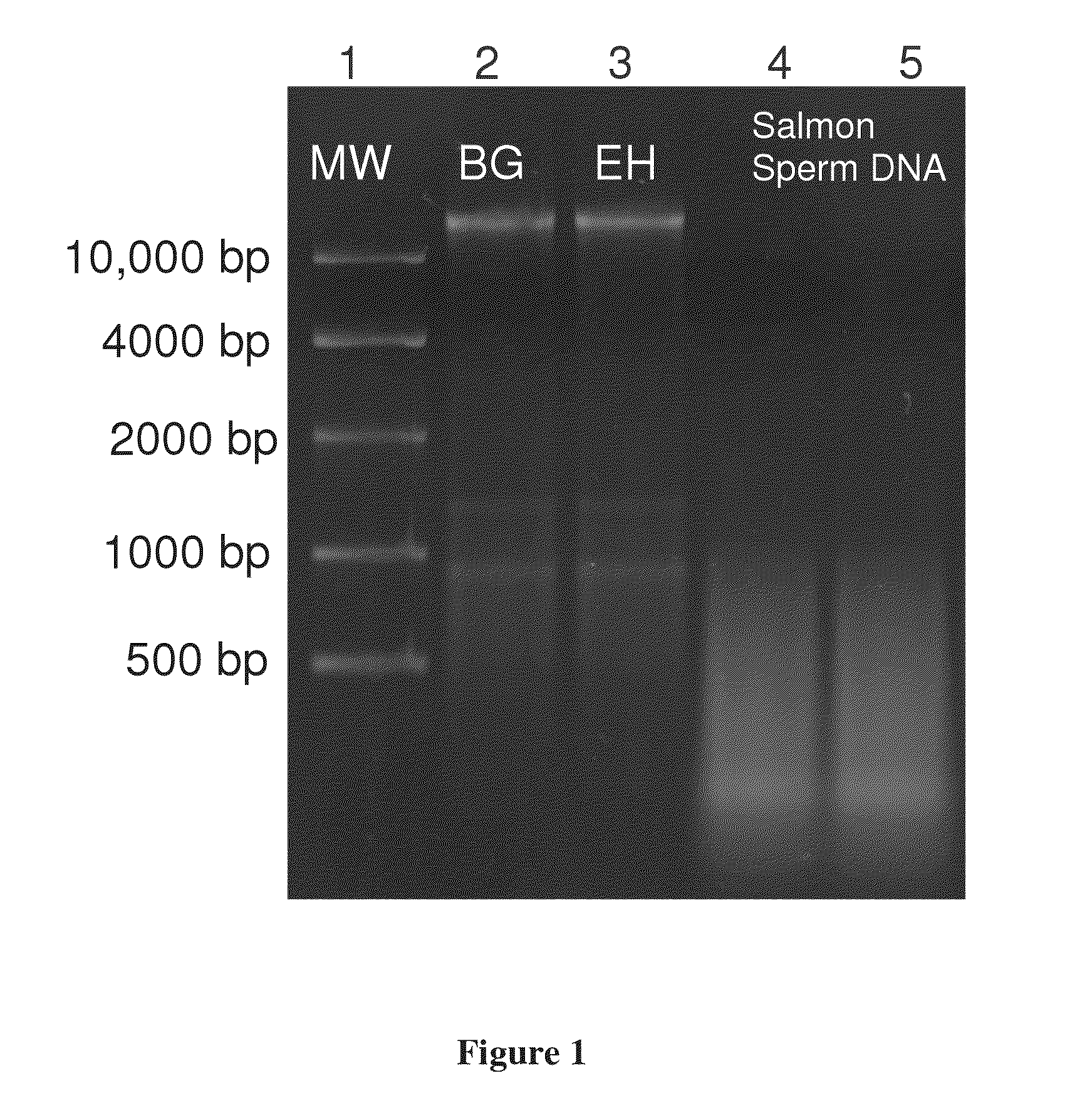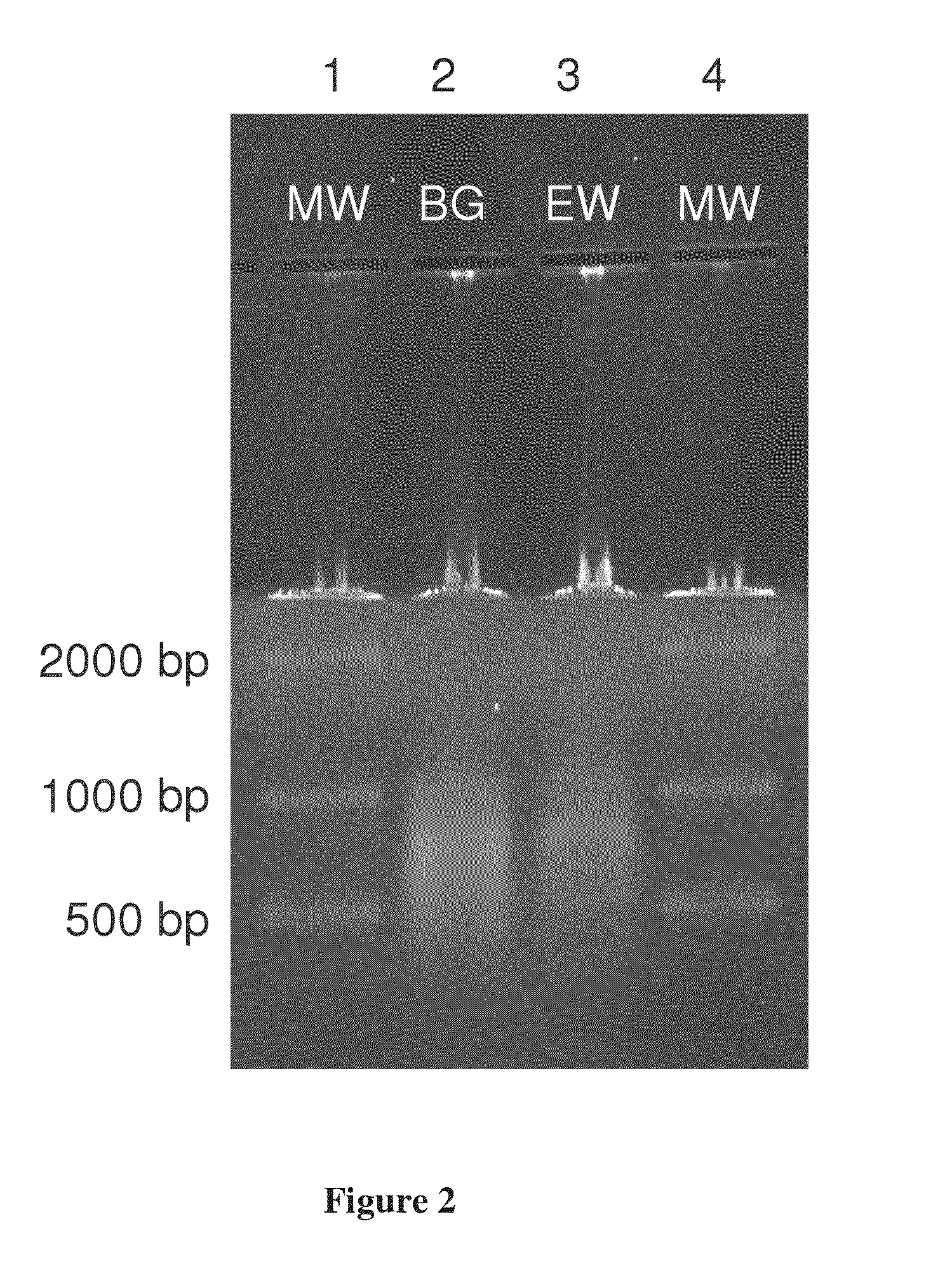Kit for co-purification and concentration of DNA and proteins using isotachophoresis
a technology of isotachophoresis and co-purification, which is applied in the field of purifying proteins and nucleic acids, can solve the problems of large, complex, and expensive equipment for obtaining and analysing samples, and achieves the effect of automatic processing
- Summary
- Abstract
- Description
- Claims
- Application Information
AI Technical Summary
Benefits of technology
Problems solved by technology
Method used
Image
Examples
working examples
[0049]Buffer Abbreviations:
[0050]Bicine buffer, (N,N-Bis(2-hydroxyethyl)glycine), Bis-Tris(2-(bis(2-hydroxyethyl)amino)-2-(hydroxymethyl)propane-1,3-diol), TAPSO (2-Hydroxy-N-(tris(hydroxymethyl)methyl)-3-aminopropanesulfonic acid), HEPES (4-(2-hydroxyethyl)-I-piperazine ethanesulfonic acid), MES (2-(N-morpholino)ethanesulfonic acid).
example 1
Purification and Characterization of Nucleic Acid
Methods:
[0051]Bacillus atrophaeus (BG) spores were prepared by adding 1 gram of a lyophilized spore stock to 1 mL of ddH2O. Erwinia herbicola (EH) cells were prepared by growing cells from a freezer stock to mid-log phase in nutrient broth. Cells were harvested by centrifugation suspended in ddH2O. BG spores and EH cells were lysed and their genomic DNA purified using the QIAMP DNA Mini Kit (PN 56304, Qiagen) according to manufacturer's instructions with minor modifications to the volumes and incubation times. Purified DNA was quantitated by OD260 / 280 ratios (Sambrook and Russell (2001), Molecular Cloning: A Laboratory Manual, 3rd edition, Cold Spring Harbor Laboratory Press) and previously validated in-house real time polymerase chain reaction assays (RT-PCR) targeting the recA gene of BG and the chorismate mutase (aroQ) gene of EH. Purified DNA was added directly to the standard humic acid solution prior to separation. DNA was dilut...
example 2
[0069]Isotachophoresis agarose gels were prepared using the identical equipment described above except the buffers employed in the separation process were changed. Separation and concentration of protein and DNA was accomplished using TAPSO NaOH as a buffer in place of Bicine (FIG. 11) as well as a buffer system that separates and concentrates both nucleic acids and proteins using a dual buffer system (FIG. 12).
TABLE 1TAPSO Buffer Run1% Gel, (0.4M Bis-Tris, 0.05M MES)0.301 g agarose12 ml 1.0M Bis-Tris3 ml 0.5M MES15 ml filtered diH201.5 μl EtBr
[0070]The gel solution above was prepared and poured into the gel box. Once solidified, the wells were loaded with 12 μl each of xylene cyanol dye, 500-10 Kb ladder standard, 7.24 μg / ul BG DNA, 1 mg / ml OVAL, 1 mg / ml BSA, and xylene cyanol dye. A TAPSO buffer (0.2 M TAPSO, 0.1 M NaOH) was added to the negative electrode side of the gel box and a Bis-Tris acetate buffer (0.4 M Bis-Tris, 6 mM acetic acid) was added to the positive electrode side ...
PUM
 Login to View More
Login to View More Abstract
Description
Claims
Application Information
 Login to View More
Login to View More - R&D
- Intellectual Property
- Life Sciences
- Materials
- Tech Scout
- Unparalleled Data Quality
- Higher Quality Content
- 60% Fewer Hallucinations
Browse by: Latest US Patents, China's latest patents, Technical Efficacy Thesaurus, Application Domain, Technology Topic, Popular Technical Reports.
© 2025 PatSnap. All rights reserved.Legal|Privacy policy|Modern Slavery Act Transparency Statement|Sitemap|About US| Contact US: help@patsnap.com



